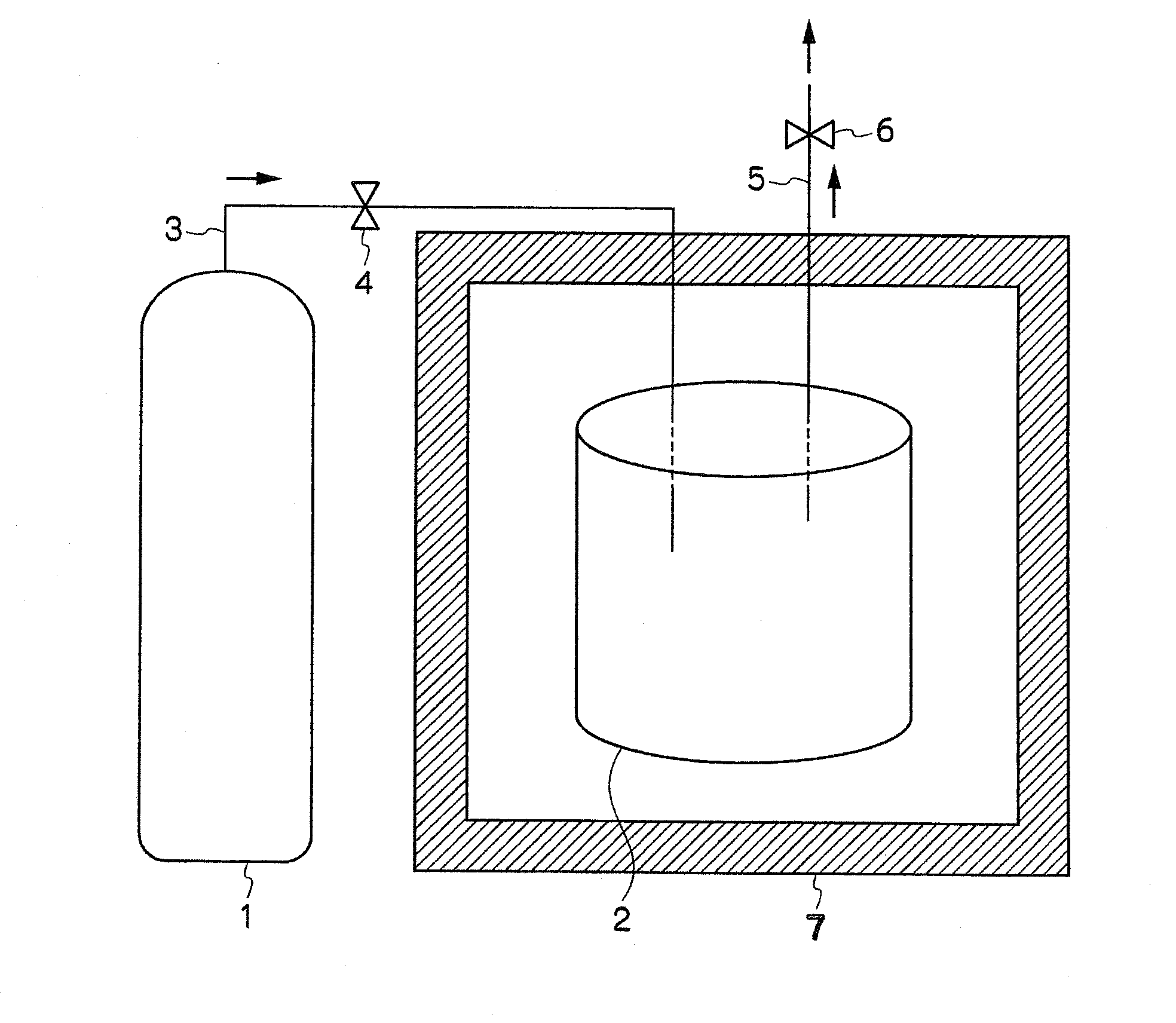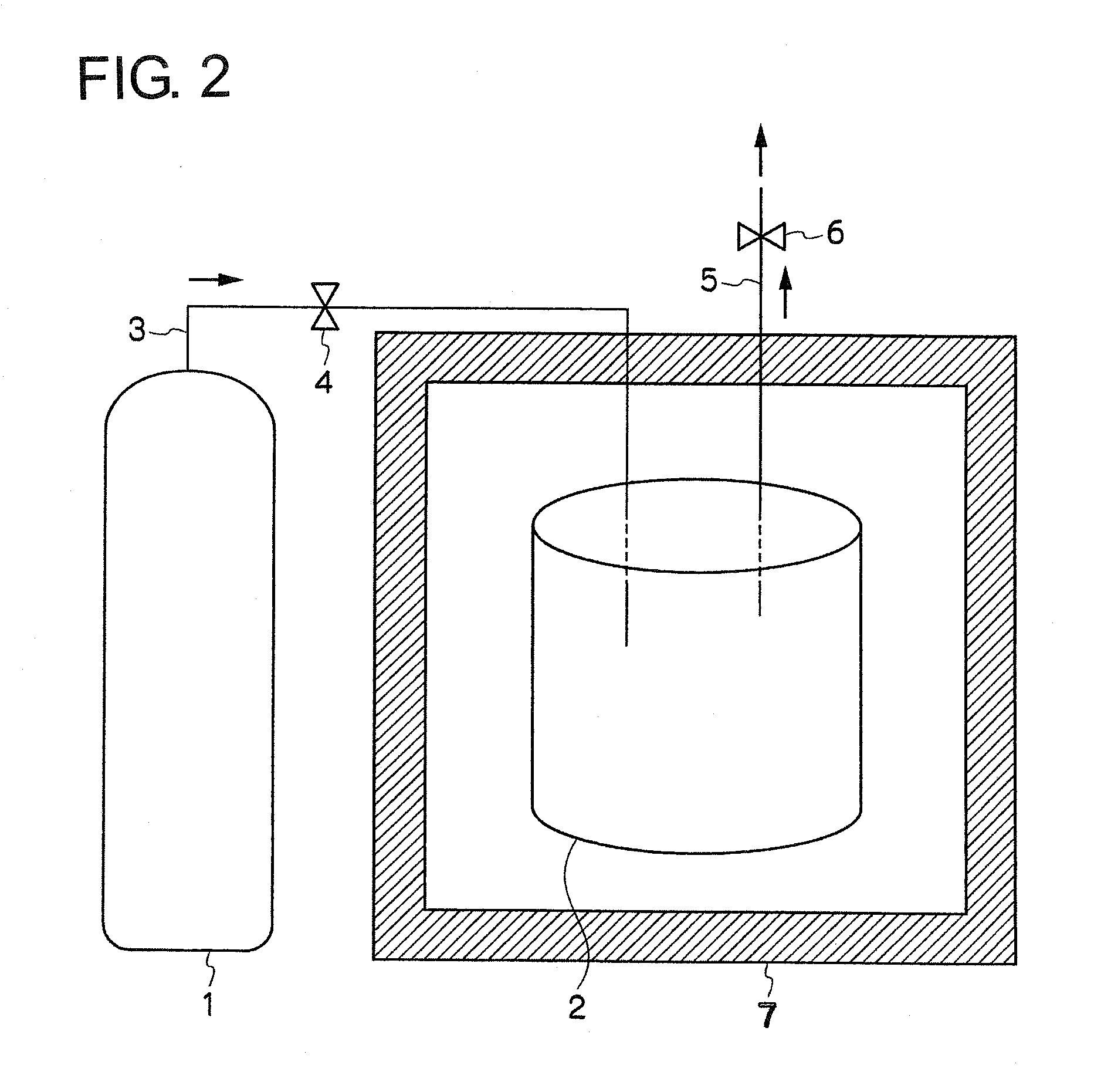Method for treating organic waste and method of utilizing heat energy
- Summary
- Abstract
- Description
- Claims
- Application Information
AI Technical Summary
Benefits of technology
Problems solved by technology
Method used
Image
Examples
examples
[0083]Next, the method of reaction treatment of the organic waste according to this invention is explained in detail by referring to specific experiments.
experiment 1
[0084]As Experiment 1, a reaction test was performed under a slightly high pressure. As a sample for the test, excreta (wastes) of milk cow obtained from a farm of the Agricultural Dept. of Utsunomiya University was used in the test after adjusting its water content ratio at approximately 50-60% w.b. and being the organic waste is left out at 30° C. for approximately 15 hours. For the test device, a slightly high pressure reaction device having a structural form similar to the one shown in FIG. 2 is used. 220 g of a sample (water content ratio: 51.6 w.b. %) is placed in a 1-litter reactor. After closing the exhaust opening of the reactor, air is fed into the reactor from the air tank to maintain the pressure in the reactor at 1 MPa. The test was completed when the temperature reached to approximately 110° C. to 120° C. in consideration of the characteristics of the test device used.
[0085]The gas during the reaction of Experiment 1 was analyzed. Concentration of the gas during the re...
experiment 2
[0086]As Experiment 2, a reaction test was performed under a normal pressure. The same sample as the one used in Experiment 1 was used for the test. The test device was so the same was the one used in Experiment 1. 250 g of the sample (water content ratio: 61.0 w.b. %) was placed in a 1-litter reactor. Approximately 0.6 L·min−1·kg-vm−1 of air was flown in the reactor. After reaching a composting temperature at approximately around 70° C., an air intake opening and an air exhaust opening of the reactor were closed to seal the reactor under a normal pressure. This test was also terminated when the temperature reached to approximately 110° C. to 120° C. in consideration of the characteristics of the test device used. The gas analysis similar to that performed in Experiment 1 was also performed in Experiment 2.
(Result of Temperature Changes)
[0087]FIG. 3 is a graph showing temperature changes in Experiment 1 (slightly high pressure reaction test) and Experiment 2 (pressureless reaction t...
PUM
 Login to View More
Login to View More Abstract
Description
Claims
Application Information
 Login to View More
Login to View More - R&D
- Intellectual Property
- Life Sciences
- Materials
- Tech Scout
- Unparalleled Data Quality
- Higher Quality Content
- 60% Fewer Hallucinations
Browse by: Latest US Patents, China's latest patents, Technical Efficacy Thesaurus, Application Domain, Technology Topic, Popular Technical Reports.
© 2025 PatSnap. All rights reserved.Legal|Privacy policy|Modern Slavery Act Transparency Statement|Sitemap|About US| Contact US: help@patsnap.com



